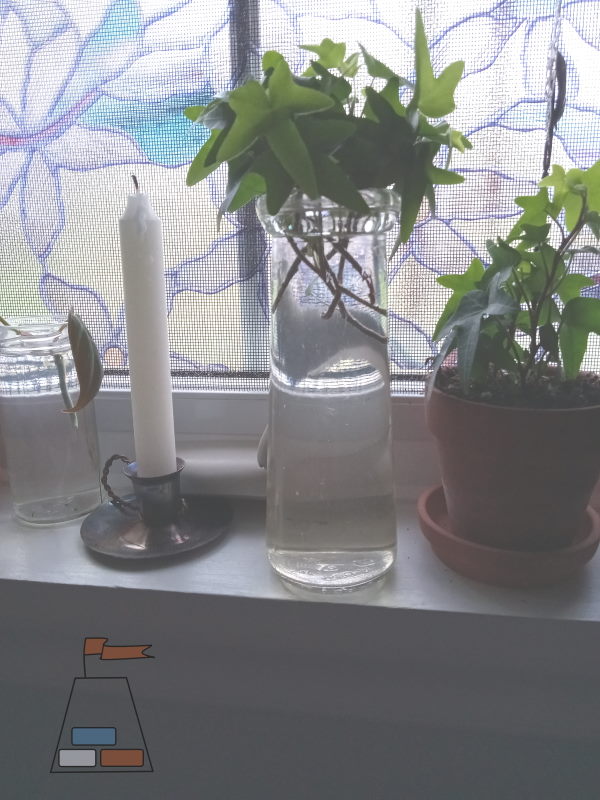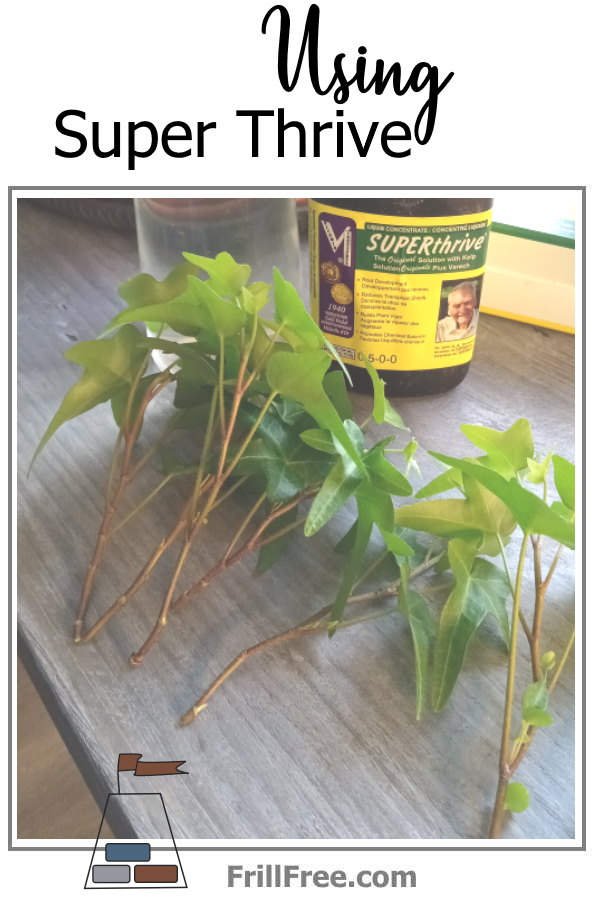- Homesteading
- Growing Ornamental Plants
- Using Super Thrive
Using Super Thrive
Giving Cuttings an Extra Boost
I am a participant in the Amazon Services LLC Associates Program, an affiliate advertising program designed to provide a means for me to earn fees by linking to Amazon.com and affiliated sites. Other links on this site may lead to other affiliates that I'm associated with.
The most successful propagators will use every advantage to get cuttings to root. The best growers experiment constantly to find that advantage for faster, more even rooting and healthier subsequent growth.
Using Super Thrive almost seems like cheating. The challenge in growing plants is to find out which cuttings at which growth stage will have the best chance at rooting and growing into a mature plant quickly.
Taking advantage of the unique properties of Super Thrive is one way to give your cuttings a head start, and get them past the stage of staying alive while they produce roots to be self sustaining.
Using Super Thrive in the first waterings can help them root fast,when sticking them into soil.
This experiment is to see if using Super Thrive in the water rooting system itself will give an unfair advantage.
I'm taking cuttings of Hedera helix, the English ivy. I grow a lot of this in water, and I have a good handle on how long it takes - sometimes two weeks or more.
So if I can cut that down to less than a week, like the geranium cuttings I did, wouldn't that be cool?
The less time the better, giving me the edge on getting baskets of mixed plants going sooner, or planting topiaries with ivy growing around wire frames, or just having the enjoyment of seeing plants thriving.
 Using Super Thrive to assist with the rooting process on ivy cuttings
Using Super Thrive to assist with the rooting process on ivy cuttingsI cut six pieces off my main mother plant, and trimmed off the lower two or three leaves.
Then I used water salvaged from the heat pump. It's clean, condensed water that it routinely purges, giving me a steady source of almost pure water. You can use water from an air conditioner or even the refrigerator, which use the same kind of technology.
Then I added a few drops of Super Thrive, and put the lower ends of the cuttings down into the water, making sure they're fully immersed. They won't root if they're not in contact with the water, and we want every advantage here.
And now we wait. The cuttings were take on May 10, so now the clock is ticking, to see how long they take to form enough roots to transplant into soil.
Ideally, in any experiment, you would take cuttings and put them into plain water as a control, which in this case, I didn't do. Bad scientist!
The other important factor is just that; how will they adapt to soil, rather than water, when you transplant them. Sometimes, this is when they falter, when trying to adjust to soil growing.
Leaving them too long in the water makes them put out very brittle and soft roots which break when planted in soil. If I can get plants to ignore the change from water to soil and just take off, I'll be happy.
Maybe Super Thrive in the watering can will help with that too. Apparently, this product has been used for a long time to prevent transplant shock.
Update on the cuttings May 12
The cuttings have been in the Super Thrive water for two days, and it's interesting; the water has gone cloudy. I will watch it for algae growth, which seems to be a trait of many similar types of products, such as water soluble fertilizers.
Update on May 28
Oddly, using Super Thrive in this way doesn't seem to work. The cuttings have been in the water for 18 days, which is when they normally start to show signs of roots, and no rooting at all has occurred.
So I'm going to say that this is a bust.
However, the place that Super Thrive truly does come into its own is when soaking existing roots, prior to planting. So from now on, this is how I'll use it. I'm glad I did this experiment, and now I know.















